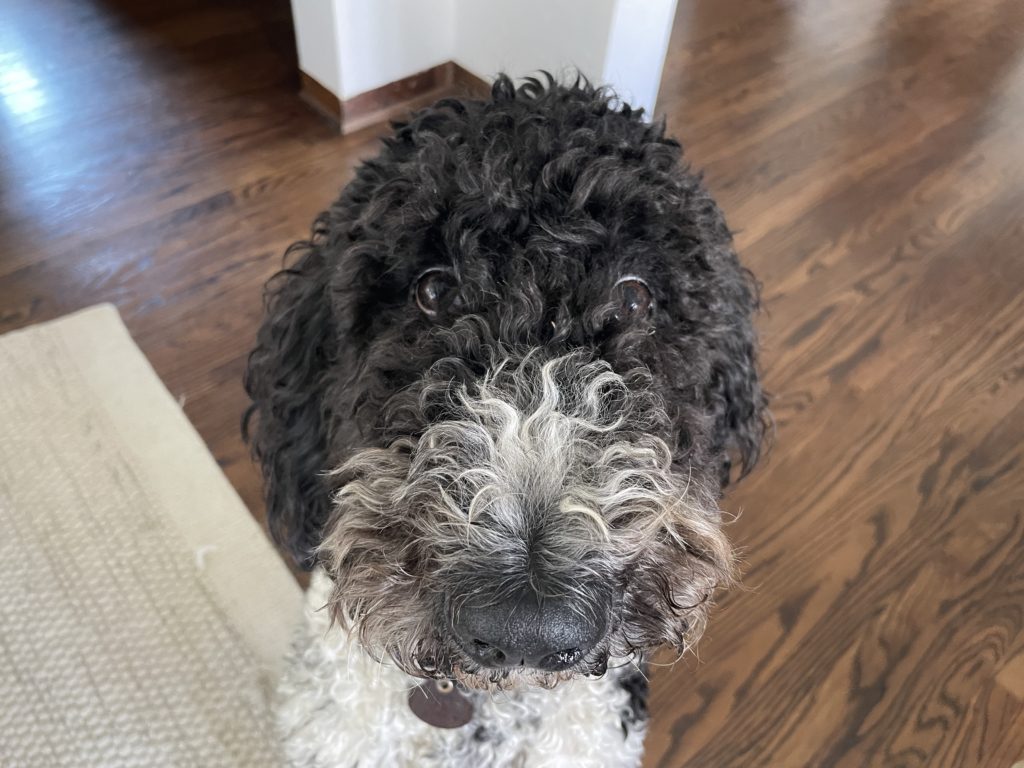Tips to Stop a Dog From Barking at Strangers
By: David Codr
Published Date: October 2, 2022
For this LA dog training session we worked with one-year-old Standard Poodle Rufus, sharing tips to stop a dog from lunging at strangers.
Because Rufus is a little bit aloof and uncomfortable meeting new people, I recommended the guardians bring him outside where there are a lot of distractions and plenty of open space. I left a treat trail from their door to where I was sitting on the curb and after giving him a handful of treats, we seemed to be good buddies.
We started the session by going over a number of dog training fundamentals; Marker words, cues, hand targeting, how to reward desired behavior to motivate dogs to do the things we want, how to teach Rufus some manners and some mental stimulation tips like cookie in the corner as he’s a pretty chill dog.
How to Stop a Dog From Barking at Strangers
.
One undesired dog behavior the guardians wanted help with was Rufus‘s habit of barking and lunging infrequently at some strangers. I went over dog body language and dog consent so that the guardians recognize the dog’s feelings and emotions so they are better equipped to manage interactions with other people. Sometimes the best way to manage a reactive dog is to avoid certain situations that may trigger an unwanted behavior.
But I also wanted to show the guardians a tip to stop dogs from barking at strangers. This is an exercise that the guardians will need to practice on a regular basis to stop their dog from barking or lunging when meeting strangers. Stopping a dog from barking at strangers is all about making sure the dog feels comfortable and then creating a positive association.
We headed up the street to Jurassic Magic for some coffee for the guardians and so I could show them how to practice something I like to call Click for Looks. This is an easy way to stop dogs from barking when meeting strangers. If you have a dog that barks or lunges at people it doesn’t know, you should definitely check out the free positive dog training video below.
By clicking each time Rufus looks at a stranger, provided he is not reactive, his guardians can help him start to develop a positive association with people. Now its important to note that this is a process. It usually takes a number of carefully staged practice sessions where the dog is set up for success such as going to the coffee shop when it is very slow. Or, as I mentioned in the video, practicing having Rufus simply sit in the location by the chairs in the shop while he gets a lot of treats a few occasions before the guardians start practicing the click for looks exercise.
It will really help the guardians out if they can practice this click for looks exercise in parks and with their friends in outdoor settings first. This secret to stopping dogs from barking when meeting people requires an easy starting point ot develip the skill; both for the human and the dog. This is why practicing at a park with lots of space on a slow day is often the ideal starting point.
Here is a video we shot at a park of another client who has a dog named Boba with a similar problem. A park with a large open area like this has multiple advantages for this kind of dog behavior help.
By creating a situation where we can control all the elements (the location, the helper and choosing a time of day when the park is less busy), and expose the dog to the stimulus in a lower level of intensity, we can help Rufus learn how to behave the way that we want, aka stop barking when meeting new people. Once that’s the case, the dog can start to relate looking at people equals I get treats. After that relaziation is formed, the guardians can gradually start to get closer and closer to those people, until eventually (hopefully) the people are the ones giving Rufus the treat. But the key is Rufus can’t react (bark or lunge). If he does, they need to immediately stop, move away until he is relaxed again, then repeat but at a greater distance so he doesnt react. And they shoudl always end on a positive repetition.
That may be over simplifying things a little bit. But basically all we’re doing is modifying how the dog looks at strangers; changing the perceptions from something the dog has a negative association to, to something that generates a positive for the dog and is done at a level the dog feels comfortable at. It will take time and dedicated practice in short, easy sessions that gradually get more life-like. But since Rufus’s behavior is on the lower end of the spectrum and his guardians are so dedicated, im very optamistic they will be successful
To help the guardians remember all of the dog behavior tips I shared with him in this in-home LA dog training session, we recorded a roadmap to success summary video that you can check out below.
Categorized in: Dog Behavior


